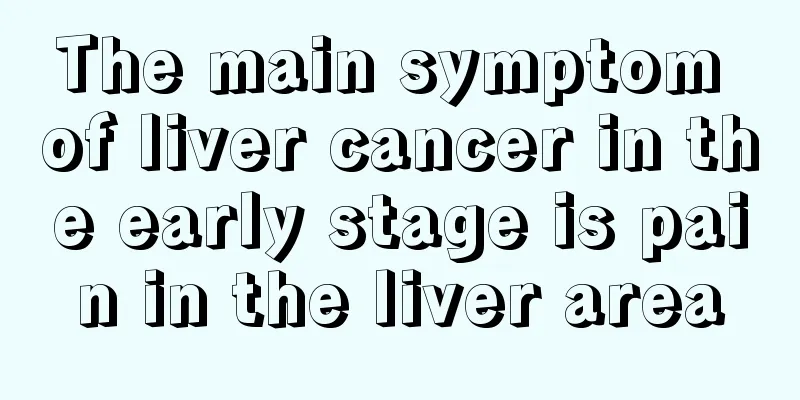There are many signs of blood vessel blockage, chest pain is one of them

|
Blood vessels are the channels that transport blood in the human body. If the blood vessels are blocked, blood cannot flow smoothly in them, which may cause various discomforts at the mildest and endanger life at the worst. Early detection of signs of blood vessel blockage and taking necessary measures in a timely manner are crucial to saving lives. If you experience any of the symptoms summarized below, be sure to seek medical attention promptly. 1. If you suddenly feel chest tightness, be alert to pulmonary embolism. If you suddenly feel chest tightness and shortness of breath, or even faint when you stand up after sitting for a long time or lying in bed, you should be alert to the possibility of pulmonary embolism caused by the detachment of blood clots in the lower limb veins and blocking the pulmonary artery. Pulmonary embolism is very harmful and can cause sudden death in severe cases. Therefore, if you experience the above symptoms, you should go to the emergency room as soon as possible. 2. Chest pain may be caused by coronary heart disease or myocardial infarction. The full name of coronary heart disease is “coronary atherosclerotic heart disease”. The coronary arteries are blood vessels that supply blood to the heart. If they are blocked or narrowed, the blood supply to the heart will be restricted, and severe ischemia will cause chest pain. If the chest pain is persistent, it is even more dangerous, indicating that the coronary artery is completely blocked and blood flow is completely interrupted. If it lasts for more than 15 to 20 minutes, the myocardium will die, which is called myocardial infarction. 3. If one side of the limbs is weak, be careful of stroke. Sudden weakness of one side of the limbs (including upper and lower limbs) indicates blockage of the cerebral artery or carotid artery. It may also be accompanied by slurred speech, facial paralysis on one side, blurred vision, etc. If these symptoms occur, you need to see a doctor promptly, regardless of whether they can be relieved on their own. 4. Edema and changes in urine volume indicate renal artery obstruction. The renal artery is responsible for the blood supply to the kidneys. If plaques occur in the renal artery, it may reduce the blood supply to the renal artery and even affect kidney function, causing symptoms such as fatigue, decreased appetite, changes in urine volume, and limb edema. The kidney is an important organ for regulating blood pressure. Renal artery stenosis can lead to high blood pressure, and this high blood pressure cannot be effectively controlled by medication. As renal ischemia worsens, its "detoxification" function will be damaged and may even develop into "renal failure", requiring dialysis treatment. 5. Leg pain when walking, lower limb arteries are blocked. The limb arteries are responsible for the blood supply to the upper and lower limbs. When the blood vessels in the lower limbs are ischemic, you may experience leg pain when walking. The pain may be relieved after resting, but will reappear when you walk again. The medical term is "intermittent claudication." If the blockage of the lower limb arteries is ignored and the disease progresses further, it may lead to severe ischemia of the lower limbs, a decrease in skin temperature, weakening or disappearance of the pulsation of the dorsalis pedis and posterior tibial arteries, and lower limb pain even when not walking (i.e. resting pain). Further development may lead to limb ulceration, inability to heal wounds, and even tissue necrosis (gangrene), necessitating amputation. Diabetic patients are more likely to develop lower limb lesions, so they must pay special attention to it. 6. Weak pulse, low blood pressure, and blockage of upper limb arteries. This problem should not be underestimated. If the upper limb arteries are blocked, the arterial pulsation on one or both sides will weaken and the blood pressure in the arm will decrease. In severe cases, the upper limbs will actively "steal" blood from the brain, causing cerebral ischemia and symptoms such as dizziness and unsteady standing. 7. Asymmetric edema of the lower limbs should alert you to deep vein thrombosis in the lower limbs. It is easy to occur in patients who are bedridden for a long time, sit for a long time, are dehydrated, have tumors, etc., and manifests as swelling and pain in the lower limbs. If you find that the degree of edema in your two feet or legs is inconsistent, or one side is not swollen but the other side is swollen, it is often a sign of deep vein thrombosis in the lower limbs. The blood clot blocks the veins, causing poor blood return, which in turn causes edema of the limb on the side where the blood clot is formed. At the same time, there will be symptoms such as cold skin and prone to ulcers. Once a blood clot in the veins of the lower limbs breaks off, it will block the pulmonary artery. In summary, the main signs of blood vessel blockage include: chest pain and tightness, palpitations and shortness of breath, abnormal sensation, movement or speech disorders, dizziness and headache, changes in blood pressure, limb pain, cold hands and feet, limb swelling, leg pain when walking, etc. While we are alert to these signs, we must also pay attention to correcting bad habits and maintaining a healthy lifestyle. If we have vascular disease, we must take medication on time as prescribed by the doctor, or seek surgical treatment. |
Recommend
Can I get pyloric infection without gastric inflammation?
Helicobacter pylori is the main cause of chronic ...
What is the common sense about pancreatic cancer
With the progress of the times, people's livi...
How to deal with hazardous waste
If we want to live a normal life, we will definit...
My face became bigger after the face-lift injection. Why?
Some women feel that there is no effect after get...
What are the benefits of washing your face with salt water
We wash our faces every day to clean our skin. If...
Black growth on the sole of the foot?
With the improvement of people's health aware...
Do you know the tips for removing freckles?
Freckles on the face will not only affect the fac...
What is the cure rate of rectal cancer
Since the early symptoms of rectal cancer are ver...
What should I eat if I have severe diarrhea and watery stools
I believe that most people have encountered diarr...
What is acute gastroenteritis
In life, everyone must be familiar with the disea...
What to do if herpes appears at the corner of mouth
Herpes, everyone has seen it. It usually appears ...
Commonly used auxiliary diagnostic methods for cervical cancer
The diagnosis method of cervical cancer is based ...
Urine test epithelial cells high
Under normal circumstances, human urine contains ...
What is the best way to reduce scars?
The presence of scars actually has a great impact...
What should I do if rhinitis becomes severe during pregnancy?
Every pregnant woman is very careful during pregn...









